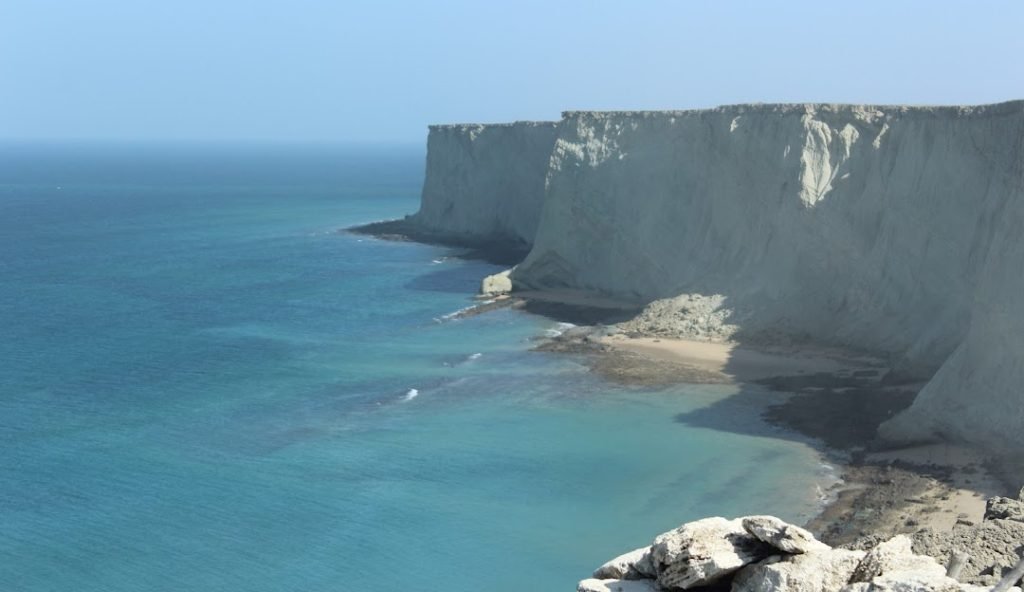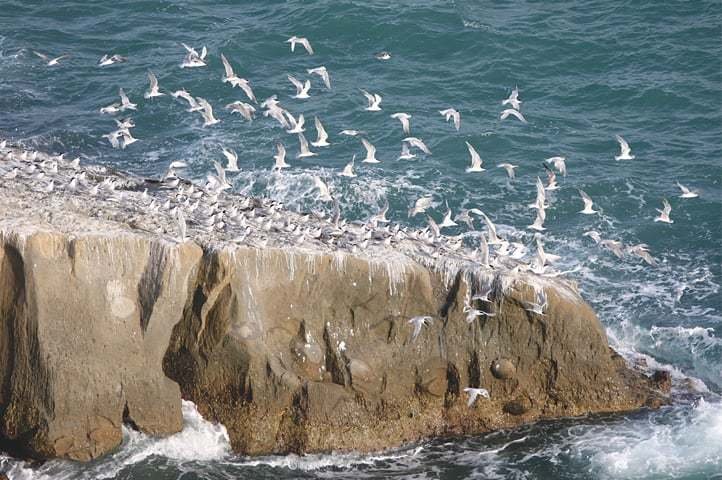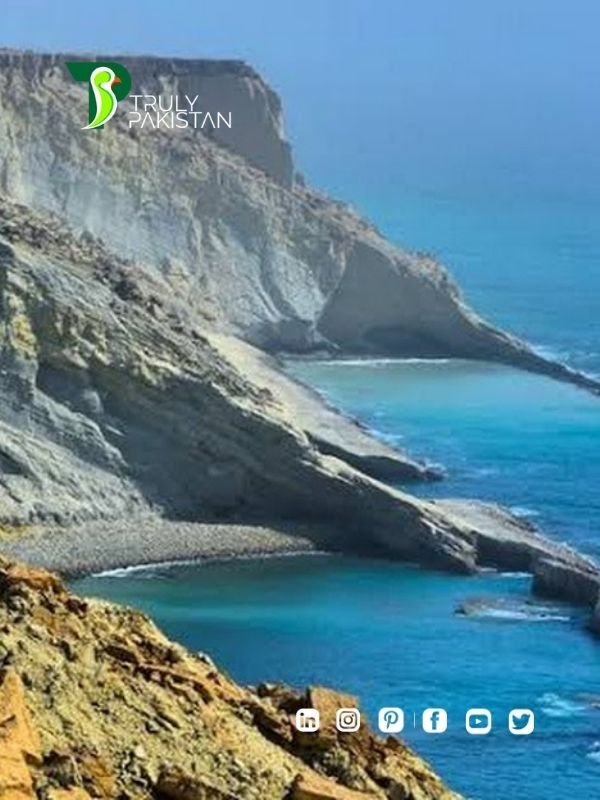Astola Island: Exploring the largest island in Pakistan


Agree: Pakistan is famous for its mountains—but here’s the twist: its coastline hides a marine wonder many have never seen.
Promise: In this guide, you’ll get a clear, data-backed look at Astola—the largest island in Pakistan—from fast facts to maps, wildlife, travel routes, and conservation status.
Preview: We’ll start with quick facts and location, then move into comparisons, how to reach it, best time to go, ecology, camping, culture, and planning tips—step by step.
Table of Contents
Quick facts about the largest island in Pakistan
Need the essentials at a glance? Here you go— Official name Astola Island (also called Jazira Haft Talar, “Island of the Seven Hills”) Why it matters It’s the largest offshore island in Pakistan by area Area ~6.7 km² (≈2.6 sq mi) Dimensions ~7 km long, up to ~2.5 km wide Elevation Highest point ~75 m (≈246 ft) above sea level Where Northern Arabian Sea, off the Makran coast (Gwadar District, Balochistan) Nearest port Pasni (≈39 km by sea; the island lies ≈25 km off the mainland coast) Protection status Declared a Marine Protected Area (MPA) in 2017
Want to dig deeper later? Keep these authoritative primers handy: Astola Island overview and the IUCN MPA announcement (2017).
Where exactly is the largest island in Pakistan located?
Let’s pinpoint it. Astola sits in the Arabian Sea, off Pakistan’s Makran coastline in Balochistan’s Gwadar District. It’s roughly 39 km southeast of Pasni by boat and about 25 km from the nearest mainland coast. Practically speaking, most trips begin by road on the Makran Coastal Highway to Pasni, then continue by sea.
Why that matters: distance and sea state affect travel time (typically 3–5 hours by motorized boat). Translation—plan for daylight departures and a reliable operator.
Travel readiness checklist for visiting the largest island in Pakistan
Before you start calling boat operators, make sure you’ve got the basics covered—
- Timing: Aim for fair-weather months; avoid monsoon and high-wind forecasts.
- Permit & registration: Confirm any local registration requirements at Pasni.
- Boat operator: Choose an experienced captain with safety gear and VHF/phone contact.
- Safety kit: Life jacket, first-aid kit, reef-safe sunscreen, hat, and plenty of water.
- Leave-no-trace: Pack out all waste; respect wildlife and MPA rules.
Astola Island vs Other Islands in Pakistan
Pakistan’s coastline hosts several islands, but Astola stands out for its size and ecological importance. Let’s compare—
| Island | Province | Approx. Area | Key Features |
|---|---|---|---|
| Astola (Jazira Haft Talar) | Balochistan | ~6.7 km² | Largest island, Marine Protected Area, diverse wildlife |
| Manora | Sindh | ~2.5 km² | Historic lighthouse, naval base, urban access near Karachi |
| Bundal & Buddo | Sindh | ~3.0 km² combined | Mangroves, tidal ecosystem, near Karachi |
| Churna | Balochistan | ~1.2 km² | Diving, snorkeling, coral reefs, recently declared MPA |
As the table shows, Astola dwarfs the others—making it not only the largest but also the most ecologically significant island in Pakistan.
Why Astola Holds the Title of Largest Island in Pakistan


So, what makes Astola’s title undisputed? Three reasons—
- Official recognition: Government and conservation bodies consistently cite its 6.7 km² area.
- Geological structure: A flat plateau rising into seven small hills gives it both size and distinct identity.
- Scientific backing: Surveys by IUCN, WWF, and academic researchers validate the measurements.
Unlike smaller islands with urban sprawl or limited biodiversity, Astola’s remote scale makes it irreplaceable in Pakistan’s natural heritage.
How to Reach the Largest Island in Pakistan
Getting to Astola is an adventure in itself. Here’s the step-by-step journey—
- By road: Travel the Makran Coastal Highway from Karachi to Pasni (~7–8 hours by car).
- From Pasni port: Hire a motorized fishing boat—average travel time is 3–5 hours depending on sea conditions.
- Permissions: Some operators require pre-registration with the local authorities; always confirm before departure.
Tip: Start early in the morning. Return journeys at night are riskier due to rougher seas and poor visibility.
Best Time to Visit Pakistan’s Largest Island
Timing is everything for a safe and memorable trip. Here’s what matters—
- Ideal season: September to March offers calmer seas and pleasant weather.
- Turtle nesting season: Green turtles are more visible from June to September.
- Avoid monsoons: July–August often brings high waves and dangerous conditions.
Pro tip: Always check the marine forecast and avoid traveling on days with strong winds or cyclones reported in the Arabian Sea.
Wildlife and Ecosystem of Pakistan’s Largest Island
Astola isn’t just the largest island in Pakistan—it’s a living sanctuary. The surrounding waters and sandy beaches host a remarkable range of marine life and birds, making it a critical biodiversity hotspot.


- Sea turtles: Both Green turtles (Chelonia mydas) and endangered Hawksbill turtles use its beaches for nesting.
- Seabirds: Yellow-billed terns, gulls, and oystercatchers use the island as a breeding ground.
- Marine species: Over 20 documented coral species, reef fish, and dolphins in nearby waters.
- Endemics: The Astola saw-scaled viper, a snake species found nowhere else in the world.
Fun fact: Researchers recorded over 800 turtle nests during one survey season, making Astola one of South Asia’s most significant turtle breeding sites.
Conservation Efforts for Pakistan’s Largest Island
Recognizing this ecological value, the Government of Balochistan declared Astola a Marine Protected Area (MPA) in 2017—the first of its kind in Pakistan. Conservation steps include:
- Restricting unsustainable fishing practices around the island
- Monitoring turtle nesting sites and coral reefs
- Campaigns against plastic waste and ghost nets
- Awareness programs for local fishing communities
Yet challenges remain: invasive species like feral cats, occasional oil spills, and unregulated tourism threaten its fragile ecosystem. Visitors are urged to follow a strict leave-no-trace policy.
Camping and Activities on Astola Island
Since Astola is uninhabited, the only way to stay is by camping. For adventure seekers, this means pristine beaches and starry skies with zero light pollution.
- Camping: Bring your own tents, water, and supplies—there are no shops or hotels.
- Snorkeling & diving: The coral reefs around Astola provide clear-water experiences for divers.
- Photography: From turtle hatchlings to dramatic sunsets, Astola is a photographer’s dream.
Important: Always travel in groups with experienced boat operators, and keep emergency contact numbers handy before departure.
Things to Do on the Largest Island in Pakistan
If you’re planning a trip, here are the highlights—
- Day hikes: Explore the seven hills that give Astola its name.
- Wildlife watching: Spot seabird colonies and, if lucky, dolphins offshore.
- Cultural ruins: Visit remnants of an old temple and a small mosque that hint at Astola’s layered history.
Cultural and Historical Significance
Astola isn’t just about nature—it carries cultural and historical weight too. For centuries, local fishermen have considered the island sacred, with legends tying it to mythical stories. Ruins of a temple dedicated to the Hindu goddess Kali still stand on the island, along with a small mosque used by fishermen during their seasonal stays.
Its strategic location in the Arabian Sea also made it a reference point for ancient maritime trade routes between the Middle East and South Asia.


Astola in Pakistan’s Modern Tourism
Today, Astola is gaining attention as a potential eco-tourism site. Government and conservation NGOs promote responsible tourism here as part of Balochistan’s adventure travel offerings. Still, the emphasis remains on preserving its fragile ecosystem over mass tourism. Small, guided tours and controlled visitor numbers are the way forward.
FAQ: Largest Island in Pakistan
Which is the largest island in Pakistan?
The largest island in Pakistan is Astola Island, also called Jazira Haft Talar or “Island of the Seven Hills.”
Where is Astola Island located?
It lies in the Arabian Sea, about 39 km southeast of Pasni in Gwadar District, Balochistan.
What is Astola Island famous for?
Astola is famous for being uninhabited, its turtle nesting beaches, endemic Astola viper, and its 2017 designation as Pakistan’s first Marine Protected Area.
How can tourists reach the largest island in Pakistan?
Visitors typically drive via Makran Coastal Highway to Pasni, then hire a boat for a 3–5 hour sea journey to Astola.
Is Astola Island safe for visitors?
Yes, with proper planning and experienced boat operators. There are no facilities, so travelers must bring supplies and follow safety guidelines.
When is the best time to visit Astola Island?
September to March is best for calmer seas. Avoid July–August monsoon season when waters are rough and unsafe.
Planning Your Visit to Pakistan’s Largest Island: Practical Guide
Before setting sail, a little preparation goes a long way. Here’s how to make your trip smooth, safe, and unforgettable.
- Budget: Expect to spend around PKR 40,000–60,000 for a group trip, including road travel, boat rental, and supplies.
- Permits: Confirm local authority requirements in Pasni; some operators handle registration for you.
- Packing essentials: Tent, portable stove, water canisters, solar charger, first-aid kit, and durable footwear.
- Food & water: There are no facilities on the island—bring everything you need for the duration.
- Emergency contacts: Keep numbers for Pasni port authorities and coast guard handy.
Pro tip: Always travel in groups and let someone onshore know your return schedule.
Conclusion: Why Astola Deserves a Spot on Your Travel List
Astola Island isn’t just the largest island in Pakistan—it’s a rare blend of untouched beauty, ecological importance, and cultural history. From coral reefs and turtle nesting beaches to ancient ruins and starlit camping nights, it’s an adventure unlike anywhere else in the country.
The catch? Its fragile ecosystem needs care. By visiting responsibly—carrying back your waste, avoiding disturbance to wildlife, and supporting conservation—you become part of the effort to protect this marine paradise.
About the Author
Author: ZunNurain Khalid — Travel & Tourism Specialist, Founder of ExploreX Pvt. Ltd., and advocate for sustainable tourism in Pakistan. With over a decade of experience in digital marketing and destination branding, ZunNurain has worked extensively on promoting Pakistan’s natural and cultural heritage.
References
- Wikipedia – Astola Island
- IUCN – Marine Protected Area designation
- WWF Pakistan – Marine biodiversity reports
- Express Tribune – Biodiversity at risk
- Dawn News – Astola Island coverage
Read More About: Charna Island, Karachi: Charna Island, Karachi


One thought on “Astola Island – The Largest Island in Pakistan”